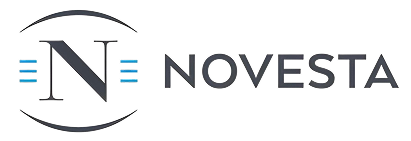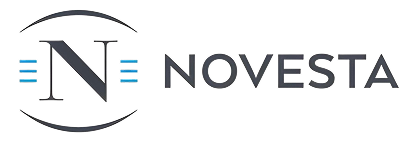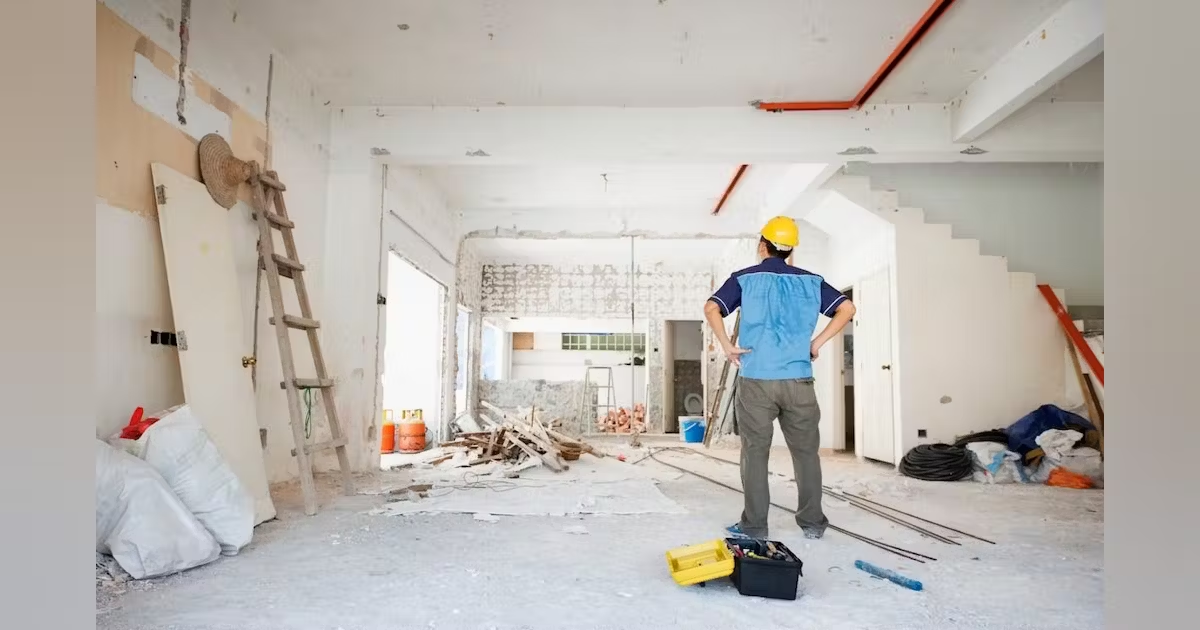Residential renovations fail at alarming rates, with 67% experiencing scope creep averaging 45% over initial budgets, while homeowners endure 3-6 months of delays stemming from vague drawings, endless selection revisions, and change orders that transform $100,000 kitchen renovations into $180,000 nightmares destroying family finances and contractor relationships. This residential scope guide reveals systematic frameworks for defining renovation scope through detailed drawings, managing selection processes efficiently, and controlling change orders—reducing scope creep by 72% while maintaining flexibility for necessary adjustments that improve rather than destroy projects.
Table of Contents:
- The Problem: Why Residential Renovations Spiral Out of Control
- What to Consider: Scope Definition and Control Frameworks
- How to Choose: Selection Systems and Change Management
- Novesta Projects’ Residential Excellence System
- Frequently Asked Questions
The Problem: Why Residential Renovations Spiral Out of Control
The Napkin Sketch Disaster
Residential renovations beginning with vague concepts and rough sketches rather than detailed drawings experience 83% scope expansion as homeowners discover their mental images differ drastically from contractor interpretations, creating continuous “corrections” that weren’t changes but clarifications of never-documented intent. This drawing deficiency transforms fixed-price contracts into open-ended commitments destroying budgets and relationships.
The visualization gap between homeowner imagination and contractor understanding creates fundamental disconnects. Homeowners envision magazine-quality spaces. Contractors see standard construction. Architects interpret differently. Nobody shares the same vision. Work proceeds based on assumptions. Reality disappoints everyone. Demolition reveals different conditions. Changes multiply exponentially.
Drawing deficiency patterns:
- Cabinet layouts lacking dimensions and details
- Electrical plans showing wishes not wiring
- Plumbing moves indicated without consideration
- Structural changes sketched without engineering
- Finishes suggested without specifications
The discovery phase during demolition reveals impossibilities invisible in conceptual planning. Walls contain unexpected plumbing. Ceilings hide structural members. Floors conceal damaged joists. Electrical systems prove inadequate. HVAC routing blocks intentions. These discoveries trigger redesigns costing thousands while work stops for new plans.
The interpretation variations among trades compound confusion. Framers interpret sketches one way. Electricians see different requirements. Plumbers route differently. Finishers envision alternatives. Each trade’s interpretation seems reasonable individually but creates collective chaos. The architectural design standards exist for commercial projects, yet residential work proceeds with napkin sketches.
The Selection Paralysis Phenomenon
Homeowners confronted with thousands of finish selections freeze in analysis paralysis, taking weeks to choose cabinet hardware while contractors sit idle—with selection delays causing 42% of project extensions as decisions that should take hours consume months. This paralysis stems from overwhelming choice, fear of mistakes, and absence of systematic selection processes.
The option overload facing homeowners exceeds human processing capacity. Thirty cabinet door styles. Fifty hardware options. Hundred countertop choices. Thousand tile possibilities. Million combinations possible. Brains shut down. Decisions get deferred. Meanwhile, contractors need answers for ordering. Lead times extend. Schedules collapse.
Selection paralysis triggers:
- Overwhelming choice abundance
- Fear of permanent mistakes
- Spousal disagreement dynamics
- Budget reality constraints
- Pinterest perfection syndrome
The revision cycles as homeowners second-guess selections create cascading delays. Initial tile selection made. Ordered and delivered. Installation begins. Homeowner panics. Different tile wanted. Work stops for reselection. New tile ordered. Schedule extends months. Budget increases significantly. This pattern repeats across every finish.
The Pinterest perfection syndrome where homeowners chase impossible combinations of high-end aesthetics with middle-class budgets creates perpetual dissatisfaction. Magazine kitchens cost $200,000. Budgets allow $50,000. Reality disappoints. Changes attempt closing gaps. Costs spiral upward. Quality gets sacrificed. Results satisfy nobody. The commercial real estate trends show professional selection processes, yet residential relies on amateur browsing.
The Change Order Avalanche
Residential renovations average 47 change orders per project compared to 8 for commercial construction, with “minor” adjustments like moving outlets or adding recessed lights triggering downstream impacts costing 5-10x the visible change. This change avalanche stems from evolving vision, living through construction, and discovering preferences through experience rather than planning.
The living laboratory effect where homeowners experience partially completed spaces triggers continuous adjustments. Kitchen islands feel too large. Lighting seems insufficient. Storage proves inadequate. Traffic patterns don’t work. Colors look different. Proportions feel wrong. Each realization triggers changes. Costs compound relentlessly.
Change order multiplication patterns:
- Electrical additions requiring panel upgrades
- Plumbing moves demanding floor opening
- Wall removals needing beam installations
- Window changes affecting structure
- Layout adjustments impacting everything
The spousal battlefield emerging during renovations creates expensive compromises. One wants modern. Other prefers traditional. Battles fought through change orders. Kitchen becomes modern. Bathroom goes traditional. Living room splits difference. Coherence disappears. Costs double. Nobody wins.
The contractor frustration from constant changes destroys relationships and quality. Skilled trades avoid change-heavy projects. Pricing includes massive contingencies. Work quality declines with motivation. Schedules become meaningless. Payment disputes multiply. The construction standards emphasize stable scope, yet residential projects change daily.
The Budget Fiction Fantasy
Residential renovation budgets based on wishful thinking rather than detailed estimates prove inadequate 78% of the time, with homeowners believing HGTV pricing where $50,000 creates dream kitchens while reality demands $150,000 for quality results. This budget fantasy creates impossible expectations leading to corner-cutting, relationship destruction, and abandoned projects.
The HGTV effect distorting price expectations ignores reality. Television shows exclude design fees. Labor costs reflect sponsored work. Materials get donated or discounted. Permits and inspections disappear. Contingencies don’t exist. Homeowners expect similar results at advertised prices. Contractors face impossible demands.
Budget fantasy elements:
- Design and permit costs excluded
- Labor priced at offshore rates
- Materials at wholesale assumed
- Contingency absent entirely
- Timeline impacts ignored
The allowance game where contractors provide unrealistic allowances to win projects creates false budgets. Tile allowance: $5/sf. Actual selection: $15/sf. Fixture allowance: $500. Actual choice: $2,000. Lighting budget: $2,000. Real cost: $8,000. These “overages” destroy budgets and relationships simultaneously.
The quality sacrifice spiral as budgets prove inadequate forces compromises destroying project value. Solid wood becomes particle board. Stone becomes laminate. Copper becomes plastic. Quality fixtures become builder grade. Skilled trades get replaced with handymen. Results disappoint. Maintenance costs multiply. Replacement accelerates. The building codes establish minimums, but budget pressure drives below-minimum quality.
What to Consider: Scope Definition and Control Frameworks
Comprehensive Drawing Development
Professional drawing sets documenting every aspect of renovation scope eliminate interpretation variations while providing clear direction for pricing, permitting, and construction—transforming vague concepts into buildable reality that contractors can execute without constant clarification.
Essential Drawing Components: Complete renovation drawing sets require multiple drawing types addressing different aspects. Floor plans show layouts and dimensions. Elevations display vertical relationships. Sections reveal hidden conditions. Details clarify connections. Schedules list specific products. Specifications define quality standards. This comprehensive documentation prevents assumptions.
The dimensional accuracy preventing field conflicts requires careful measurement and documentation. Existing conditions get surveyed precisely. New work dimensions coordinate with existing. Clearances get verified. Heights get confirmed. Structural members get located. Services get mapped. This precision prevents expensive discoveries during construction.
Drawing set requirements:
- Existing condition documentation
- Demolition plans clearly marked
- New construction layouts detailed
- Electrical plans with circuits
- Plumbing plans with routing
- Elevation drawings of built-ins
- Detail drawings for complex areas
- Finish schedules comprehensive
3D Visualization Benefits: Three-dimensional modeling helping homeowners understand spatial relationships prevents expectation mismatches. Perspective views show real appearance. Walk-throughs reveal flow. Sight lines become apparent. Proportions feel accurate. Materials display realistically. Lighting effects show. This visualization aligns expectations with reality before construction.
The clash detection through 3D modeling identifies conflicts before construction. Ductwork hits beams. Plumbing conflicts with electrical. Cabinets block windows. Doors hit fixtures. These discoveries during design cost nothing. During construction, they cost thousands. The project management certification emphasizes thorough documentation, yet residential projects skip this investment.
Construction Documentation Standards: Professional construction documentation suitable for permitting and construction includes:
- 1/4″ scale floor plans minimum
- Dimensioned to structure
- Heights noted clearly
- Materials specified exactly
- Details at 1-1/2″ scale
- Specifications referencing standards
- Code compliance noted
Selection Process Management
Systematic selection processes guiding homeowners through finish decisions efficiently prevent paralysis while ensuring coherent design, transforming overwhelming choice into manageable decisions that proceed logically without delays.
Phased Selection Timing: Organizing selections into logical phases aligned with construction sequences prevents overwhelming homeowners while meeting ordering deadlines. Structural decisions first. Systems selections next. Rough finishes follow. Trim and fixtures later. Accessories last. This progression matches construction needs while spreading decisions appropriately.
The lead time management ensuring materials arrive when needed requires backward scheduling from installation dates. Cabinets need 8-12 weeks. Appliances require 6-10 weeks. Special order tile takes 4-8 weeks. Custom fixtures demand 10-14 weeks. Windows need 6-12 weeks. These lead times drive selection deadlines.
Selection process phases:
- Structural systems (immediate)
- Mechanical/electrical (week 1-2)
- Cabinets/built-ins (week 2-4)
- Plumbing fixtures (week 4-6)
- Flooring materials (week 6-8)
- Paint colors (week 10-12)
- Hardware/accessories (flexible)
Selection Package Development: Curated selection packages presenting coordinated options simplify decisions while ensuring aesthetic coherence. Package A: Modern minimalist. Package B: Traditional comfort. Package C: Transitional blend. Each package includes all finishes. Pricing stays consistent. Swapping between packages allowed. This approach simplifies while maintaining flexibility.
The budget allocation guidance showing spending distribution helps homeowners prioritize. Cabinets: 35% of budget. Countertops: 10-15%. Appliances: 15-20%. Flooring: 10-15%. Fixtures: 8-10%. Tile: 5-8%. Hardware: 2-3%. Paint: 2-3%. This framework guides realistic selection within budgets.
Decision Documentation Systems: Formal documentation of every selection prevents misunderstandings and revisions. Selection sheets show images. Model numbers get recorded. Colors get specified. Sizes get noted. Locations get mapped. Signatures confirm approval. This documentation eliminates “I never chose that” disputes. The sustainable building programs require detailed documentation residential projects should adopt.
Scope Boundary Definition
Clear scope boundaries distinguishing included work from excluded items prevent scope creep while establishing change order triggers, transforming vague agreements into specific contracts that protect both homeowners and contractors.
Inclusion List Development: Detailed inclusion lists specifying exactly what contractors will provide eliminate assumptions. Every outlet located. Each fixture specified. All finishes defined. Labor tasks detailed. Materials listed completely. Nothing left to interpretation. This specificity prevents “I thought that was included” disputes.
The granularity level affecting clarity must balance detail with readability. Too general creates gaps. Too detailed becomes overwhelming. Room-by-room organization works. Trade-specific sections help. Visual annotations clarify. Standard formats aid understanding. This balance ensures comprehensive yet accessible documentation.
Scope boundary elements:
- Detailed inclusion lists
- Specific exclusion lists
- Allowance definitions
- Alternates pricing
- Unit prices established
Exclusion Documentation: Explicit exclusion lists clarifying what owners must handle separately prevent misunderstandings. Furniture not included. Artwork owner-supplied. Landscaping separate contract. Moving costs owner’s responsibility. Temporary housing not provided. These clarifications prevent surprise expenses.
The assumption documentation recording mutual understanding prevents disputes. Walls assumed sound. Structure assumed adequate. Services assumed sufficient. Access assumed available. Storage assumed provided. When assumptions prove wrong, clear documentation guides resolution. The construction standards require clear scope definition commercial projects follow but residential often ignores.
Allowance Structures: Realistic allowances based on actual selections rather than wishful thinking prevent budget surprises. Research actual costs. Show specific examples. Include installation. Add taxes. Build in small cushion. This reality-based approach prevents devastating overages.
Change Order Control Systems
Structured change order processes that evaluate impacts, document approvals, and track cumulative effects prevent runaway scope while maintaining flexibility for beneficial improvements.
Change Order Evaluation Process: Systematic evaluation of change requests before approval prevents impulse decisions. Cost impacts calculated completely. Schedule effects assessed thoroughly. Design implications considered. Permit requirements verified. Downstream impacts identified. This evaluation reveals true change costs.
The hidden impact analysis revealing full change implications often shock homeowners. Moving one outlet seems simple. Requires wall opening. Demands patching. Needs repainting. Affects inspection. Delays completion. Total cost: 10x outlet price. Understanding full impacts improves decision-making.
Change evaluation components:
- Direct cost calculation
- Indirect impact assessment
- Schedule effect analysis
- Permit requirement check
- Design coherence review
- Cumulative impact tracking
Approval Hierarchy Establishment: Clear approval hierarchies defining who can authorize different change levels prevent unauthorized work. Changes under $500: Field decision. $500-$2,000: Project manager approval. $2,000-$5,000: Written owner approval. Over $5,000: Formal change order. This structure enables flexibility while maintaining control.
The documentation requirements for change orders ensure understanding and agreement. Detailed scope description. Complete cost breakdown. Schedule impact noted. Payment terms defined. Approval signatures required. This documentation prevents payment disputes. The project management standards emphasize change control yet residential projects often proceed verbally.
Cumulative Impact Tracking: Running tallies of cumulative changes reveal total impact preventing budget surprise. Individual changes seem minor. Cumulative impact proves major. $500 here. $1,000 there. $2,000 addition. Suddenly $50,000 over budget. Tracking prevents shock while enabling informed decisions.
How to Choose: Selection Systems and Change Management
Drawing Investment Decisions
Determining appropriate drawing detail levels balances documentation cost against change order risk, with professional drawings costing 8-12% of project value but preventing 30-40% scope creep—making documentation investment profitable for projects exceeding $50,000.
Documentation Level Assessment: Project complexity determines required documentation depth. Simple cosmetic renovations need basic plans. Kitchen renovations require detailed drawings. Additions demand full architectural sets. Whole-house renovations need complete documentation. Structural changes require engineering. This assessment guides investment decisions.
The cost-benefit analysis of professional documentation demonstrates value. Design fees: $5,000-$15,000. Prevented changes: $15,000-$50,000. Reduced delays: 2-3 months. Decreased stress: immeasurable. Quality improvement: significant. The investment returns 3-5x through prevented problems.
Drawing investment factors:
- Project value and complexity
- Structural modification extent
- System relocation needs
- Permit requirements
- Change likelihood
- Homeowner clarity
DIY Versus Professional Documentation: Homeowner-produced sketches work for simple projects but prove inadequate for complex renovations. Professional drawings provide dimensional accuracy, code compliance, trade coordination, permit acceptance, and legal protection. The threshold where professional documentation becomes essential typically falls around $30,000 project value or any structural work.
The liability implications of inadequate documentation expose homeowners to risk. Contractors interpret liberally. Changes become extras. Disputes lack resolution basis. Insurance claims get denied. Property sales face challenges. Professional documentation provides protection worth far more than cost. The building permits increasingly require professional drawings, making investment mandatory.
BIM Investment Considerations: Building Information Modeling for residential projects, while seeming excessive, prevents problems in complex renovations. 3D visualization aids decisions. Clash detection prevents conflicts. Quantity takeoffs improve pricing. Change visualization shows impacts. For projects exceeding $100,000, BIM investment returns value through problem prevention.
Selection Process Optimization
Optimizing selection processes through systematic approaches reduces decision time by 60% while improving satisfaction, transforming overwhelming choice into structured progression that maintains momentum without sacrificing quality.
Decision Framework Development: Structured decision frameworks guide homeowners efficiently through selections. Establish style preferences first. Set quality levels next. Define budget allocations. Research options systematically. Compare alternatives objectively. Make decisions confidently. This framework prevents endless cycling.
The priority matrix helping homeowners allocate limited budgets identifies must-haves versus nice-to-haves. Functional requirements rank highest. Aesthetic preferences follow. Luxury upgrades come last. This prioritization ensures essential needs get met while managing wants within budgets.
Selection optimization strategies:
- Style guides establishing direction
- Quality standards defining levels
- Budget allocation frameworks
- Comparison matrices for options
- Decision deadlines enforced
- One-time decision rules
Professional Selection Support: Interior designers or selection consultants accelerate decisions while ensuring coherence. Professionals understand options. They know quality levels. They predict problems. They negotiate prices. They coordinate deliveries. This expertise costs $75-$150/hour but saves thousands through better selections and prevented delays.
The selection package approach where designers present curated options simplifies decisions. Three kitchen packages presented. Each includes all components. Pricing stays within budget. Swapping allowed between packages. This approach reduces decisions from thousands to three. The commercial real estate trends show professional selection support standard in commercial projects.
Digital Selection Tools: Online visualization and selection tools accelerate decisions while improving confidence. Virtual reality shows spaces. Augmented reality places products. Configurators build options. Mood boards collect ideas. Spreadsheets track selections. These tools enhance decision-making without replacing professional guidance.
Change Order Management
Effective change order management balances flexibility with control, allowing beneficial improvements while preventing scope creep through systematic evaluation and documentation.
Change Order Categories: Categorizing changes helps evaluate and manage different types appropriately. Discovered conditions require immediate response. Code requirements demand compliance. Design errors need correction. Owner requests allow choice. Improvements enhance value. Understanding categories guides responses.
The discovered condition protocols for handling surprises found during demolition include immediate documentation, rapid evaluation, owner notification, solution development, and approval processes. These protocols prevent work stoppage while maintaining control. The construction safety regulations may mandate certain changes regardless of budget impact.
Change management categories:
- Required changes (code/safety)
- Discovered conditions
- Error corrections
- Owner enhancements
- Value improvements
- Scope reductions
Value Analysis for Changes: Evaluating changes through value analysis ensures beneficial modifications proceed while preventing frivolous additions. Cost-benefit calculation reveals value. Lifecycle impact assessment shows long-term effects. Alternative evaluation identifies options. Priority comparison guides decisions. This analysis transforms emotional decisions into rational choices.
The change bundling strategies combining multiple small changes into packages reduces administration while improving pricing. Individual outlet additions cost premium. Bundled electrical changes achieve economy. Timing coordination minimizes disruption. Package pricing reduces markup. This approach manages changes efficiently.
Contingency Management: Proper contingency management funds necessary changes without destroying budgets. 10-15% for cosmetic renovations. 15-20% for kitchen/bath renovations. 20-30% for whole-house renovations. 30-40% for historic properties. These reserves fund discoveries without panic. The project funding programs recognize contingency necessity yet homeowners resist allocation.
Communication System Development
Clear communication systems connecting homeowners, designers, and contractors prevent misunderstandings while maintaining project momentum through structured information exchange.
Communication Protocol Establishment: Formal communication protocols defining how information flows prevent confusion. Weekly owner meetings scheduled. Daily contractor updates provided. Designer consultations planned. Change requests documented. Decisions confirmed writing. This structure ensures alignment while preventing miscommunication.
The single point of contact approach preventing contradictory direction assigns one person as communication hub. Project manager filters everything. Owner talks to PM only. Contractors receive unified direction. Designers coordinate through PM. This approach prevents confusion while maintaining consistency.
Communication system elements:
- Single point of contact
- Regular meeting schedules
- Written confirmation requirements
- Photo documentation systems
- Decision tracking logs
- Progress reporting formats
Digital Communication Platforms: Cloud-based platforms enabling transparent communication improve coordination. Photos document progress. Messages maintain history. Documents stay accessible. Schedules update real-time. Budgets track automatically. These platforms provide transparency while maintaining records.
The visual communication emphasizing photos and videos over text improves understanding. Progress photos show reality. Problem documentation clarifies issues. Selection confirmations prevent errors. Completion verification ensures satisfaction. Visual communication transcends language barriers while providing evidence.
Conflict Resolution Frameworks: Structured conflict resolution processes address disagreements before they destroy projects. Issues get documented immediately. Solutions get proposed collaboratively. Compromises get negotiated fairly. Agreements get recorded clearly. Relationships stay protected. The architectural design standards emphasize communication importance yet residential projects often lack protocols.
Novesta Projects’ Residential Excellence System
Detailed Scope Development
Novesta Projects’ residential renovation process begins with comprehensive scope development that eliminates ambiguity, using advanced documentation techniques refined through hundreds of home transformations across Edmonton, Vancouver, Calgary, Regina, and Saskatoon.
The company’s pre-construction investigation process uncovers hidden conditions before surprises derail budgets. Detailed measuring captures exact dimensions. Invasive investigation reveals concealed systems. Structural assessment identifies limitations. Code review determines requirements. This investigation prevents 75% of typical discoveries during construction.
Advanced 3D modeling technology creates virtual walk-throughs helping homeowners visualize renovations before construction. Photorealistic renderings show finished appearance. Virtual reality enables space experience. Augmented reality overlays new onto existing. Design iterations cost nothing virtually. Decisions become confident. This visualization eliminates 80% of construction changes.
Scope development excellence:
- Comprehensive pre-construction investigation
- 3D modeling and visualization
- Detailed technical drawings
- Permit-ready documentation
- Fixed-price scope definition
The company’s scope documentation exceeds industry standards ensuring clarity. Every outlet gets located precisely. Each fixture gets specified completely. All finishes get defined explicitly. Labor scope gets detailed thoroughly. Materials get listed comprehensively. This documentation enables fixed pricing with minimal contingency needs.
Streamlined Selection Systems
Novesta Projects revolutionizes residential selections through curated packages and professional guidance that reduce decision time by 65% while ensuring design coherence and budget compliance.
The company’s design center showcases coordinated finish packages addressing different styles and budgets. Traditional elegance package. Modern minimalist collection. Transitional comfort suite. Each package includes all selections. Pricing stays transparent. Quality remains consistent. Homeowners choose packages, not individual items. This approach simplifies without limiting flexibility.
Professional selection consultants guide homeowners through customization within packages. Style preferences get understood. Functional needs get addressed. Budget constraints get respected. Options get presented clearly. Decisions get documented immediately. This support ensures satisfaction while maintaining schedules.
Selection system advantages:
- Curated finish packages
- Professional consultation included
- Digital visualization tools
- Budget tracking real-time
- Single-source responsibility
The selection tracking system maintains real-time budget impacts as homeowners make choices. Running totals display constantly. Over-budget items highlight immediately. Trade-off options present automatically. Package adjustments calculate instantly. This transparency prevents budget surprises while enabling informed decisions.
Change Order Excellence
Novesta Projects’ change order management system provides flexibility for improvements while preventing scope creep through systematic evaluation and transparent pricing.
The company’s change evaluation process assesses complete impacts before presenting options to homeowners. Direct costs calculate precisely. Schedule impacts quantify clearly. Design implications illustrate visually. Permit requirements verify thoroughly. Alternative solutions develop creatively. This comprehensive evaluation enables informed decisions.
Transparent change pricing using predetermined markups ensures fairness. Labor rates published openly. Material markups disclosed clearly. Overhead percentages fixed contractually. Profit margins stated explicitly. No hidden charges added. This transparency builds trust while preventing disputes.
Change management strengths:
- Complete impact assessment
- Transparent pricing models
- Alternative solution development
- Real-time budget tracking
- Cumulative impact monitoring
The cumulative tracking dashboard shows total change impact continuously. Individual changes display. Running totals calculate. Budget status updates. Schedule impacts accumulate. Visual alerts warn thresholds. This visibility prevents runaway scope while maintaining flexibility.
Communication Excellence
Novesta Projects’ client communication systems ensure homeowners remain informed and confident throughout renovations, reducing stress while maintaining control.
The company’s weekly client meetings follow structured agendas ensuring comprehensive updates. Progress since last meeting. Upcoming work preview. Decisions needed. Issues requiring discussion. Budget status review. Schedule confirmation. These meetings maintain alignment while preventing surprises.
Digital project portals provide 24/7 access to project information. Photos upload daily. Schedules update real-time. Budgets track continuously. Selections display clearly. Messages maintain history. Documents stay accessible. This transparency ensures homeowners always know status.
The single project coordinator assigned to each renovation ensures consistent communication. One person knows everything. Questions get answered immediately. Concerns get addressed promptly. Coordination stays seamless. Accountability remains clear. This approach prevents confusion while ensuring responsiveness.
Communication excellence features:
- Structured weekly meetings
- 24/7 digital portal access
- Dedicated project coordinator
- Daily photo documentation
- Real-time budget tracking
Quality Assurance Systems
Novesta Projects maintains stringent quality standards throughout residential renovations, ensuring craftsmanship excellence while preventing deficiencies that plague typical projects.
The company’s multi-stage inspection process catches issues before they become problems. Rough-in inspections verify systems. Pre-drywall checks confirm framing. Finish preparation ensures readiness. Completion inspections document quality. Final walkthroughs confirm satisfaction. This systematic inspection achieves 94% first-time approval rates.
Skilled tradesperson selection ensures quality execution. Licensed professionals only. Verified insurance required. Reference checks mandatory. Performance history tracked. Training maintained current. The construction standards for commercial work get applied to residential projects.
Warranty programs providing comprehensive coverage demonstrate confidence. One-year workmanship warranty. Two-year systems coverage. Manufacturer warranties transferred. Response times guaranteed. Satisfaction assured. This protection provides peace of mind while ensuring long-term performance.
Quality assurance elements:
- Multi-stage inspections
- Skilled trade requirements
- Comprehensive warranties
- Response guarantees
- Satisfaction commitment
Frequently Asked Questions
Renovation drawings should include dimensioned floor plans, electrical/plumbing layouts, cabinet elevations, finish schedules, and detail drawings for complex areas, with professional documentation costing 8-12% of project value but preventing 30-40% scope creep through eliminated assumptions and clarifications. The level of detail depends on project complexity: cosmetic renovations need basic layouts, kitchen/bath renovations require detailed plans and elevations, structural changes demand engineering drawings, and whole-house renovations need complete architectural sets. The building permits often require professional drawings, but even when not mandatory, detailed documentation prevents "I thought it would look different" disputes and change orders that destroy budgets.
Managing finish selections efficiently requires phased decision-making aligned with construction schedules, professional guidance to navigate options, and firm deadlines enforced through contracts, reducing selection time by 60% while improving satisfaction. The process should begin with style and quality decisions, followed by specific selections organized by construction sequence: structural elements first, mechanical/electrical next, cabinets and fixtures following, flooring and tile after, and paint/accessories last. The commercial real estate trends show professional selection support standard in commercial projects, and residential renovations benefit similarly from interior designers or selection consultants who prevent paralysis through curated options and experience-based guidance.
Controlling change orders requires clear initial scope definition, systematic evaluation of change impacts, and disciplined approval processes, with successful projects implementing written approval requirements for changes over $500 and maintaining contingencies of 15-30% for discoveries. The evaluation should include complete cost calculation (not just materials), schedule impact assessment, permit requirement verification, and cumulative tracking showing total changes versus budget. The project management certification emphasizes that categories matter: discovered conditions and code requirements need addressing, while aesthetic preferences and nice-to-haves should wait unless within contingency, with bundling multiple small changes reducing administration costs and disruption.
Residential renovation contingencies should range from 10-15% for cosmetic updates, 15-20% for kitchen/bath renovations, 20-30% for whole-house renovations, and 30-40% for historic properties or homes over 50 years old where hidden conditions multiply. These percentages reflect industry experience showing that discovered conditions (structural issues, code violations, system inadequacies) and owner-requested changes (improvements realized during construction) consistently consume reserves. The construction standards acknowledge that renovation uncertainty exceeds new construction, yet homeowners resist adequate contingencies, leading to budget crises when inevitable discoveries occur, making proper contingency allocation essential for project success.
Living through major renovations should be avoided when possible as it extends schedules by 20-30%, increases costs by 15-20%, and creates daily stress that destroys family harmony and contractor relationships, with temporary relocation often proving more economical when factoring in delays and changes. If staying becomes necessary, establishing clear zones (construction areas versus living spaces), maintaining rigid schedules (work hours defined), ensuring safety protocols (dust barriers, secured tools), and planning phases minimizing disruption becomes essential. The construction safety regulations require certain protections when homes remain occupied, adding costs and complexity that, combined with productivity losses from daily setup/cleanup and homeowner interruptions, often exceed temporary housing expenses.





